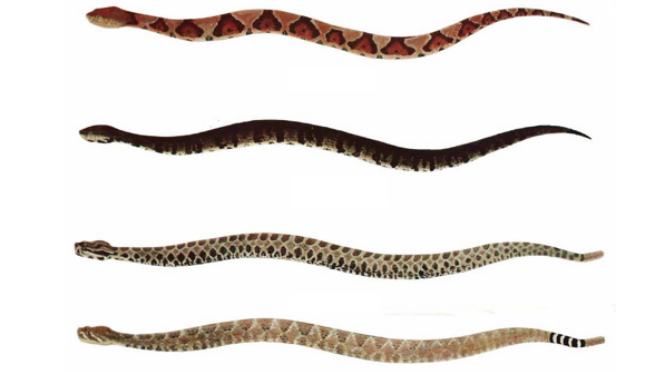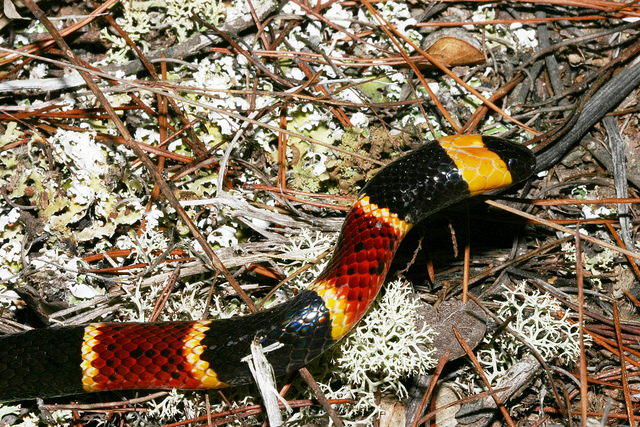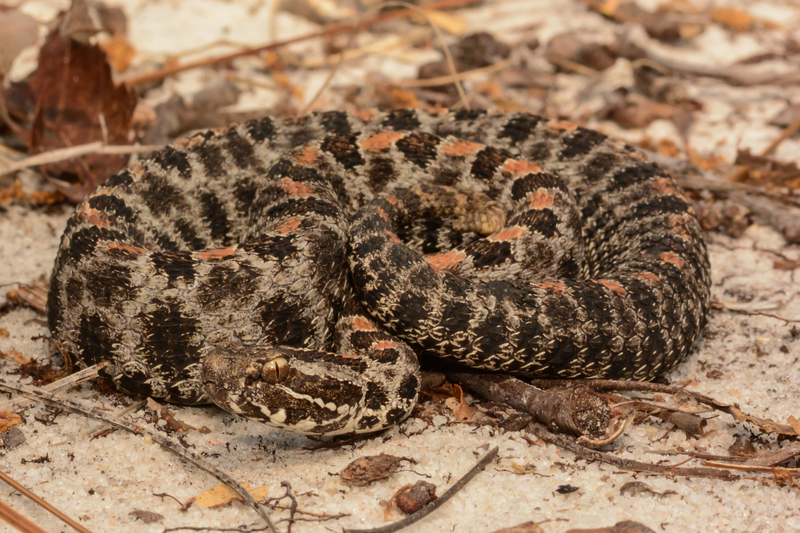via Florida Fish and Wildlife/Flickr
Western Coral Snake
Coral snakes have the second-strongest venom of any snake and are small and vibrantly colored snakes. However, they are less dangerous than rattlesnakes because they have a less effective way to deliver poison.
There are two groups of coral snakes: the Old World coral snakes which are in Asia and the New World coral snakes in the United States. New World coral snakes happen to be some of the most venomous snakes in North American because their venom has strong neurotoxins.
These venomous snakes are small and slender and are usually between 18 and 20 inches long. They’re so skinny that they can be as skinny as a pencil but have bulbous heads, tails, and round noses. It’s much harder to tell the snake’s tail from its head due to this factor.
They’re sneaky because they can use this characteristic to fool their attackers by hiding their heads in their coiled bodies. They’d rather use their tail than their head!
If you happen to come across a coral snake and accidentally provoke him the snake may make a popping sound by expelling air from what’s known as their cloaca. The cloaca is a single opening for their reproductive, urinary, and intestinal tract and the popping sound that comes from it is used to startle anything that’s a threat to them.
Next Page »
Pygmy Rattlesnake
A pygmy rattlesnake’s body is grayish and its back and sides have rows of dark gray and oddly shaped blotches. The blotches on the back are darker and can be separated by a brown stripe down its spine. The tail has a tiny rattle that can break off and the scales have ridges, otherwise known as keels.
Located in eastern North Carolina to the Florida Keys, west to eastern Oklahoma, and even east Texas, it’s around 15-31″ long.
This snake is found throughout Florida in a variety of habitats from sandhills to dry upland forests to flooded marshes and flatwoods. If you happen to encounter this snake you’re most likely to come across one in an urban area, such as a brush pile or garden, so be sure to keep your eyes open while gardening!







